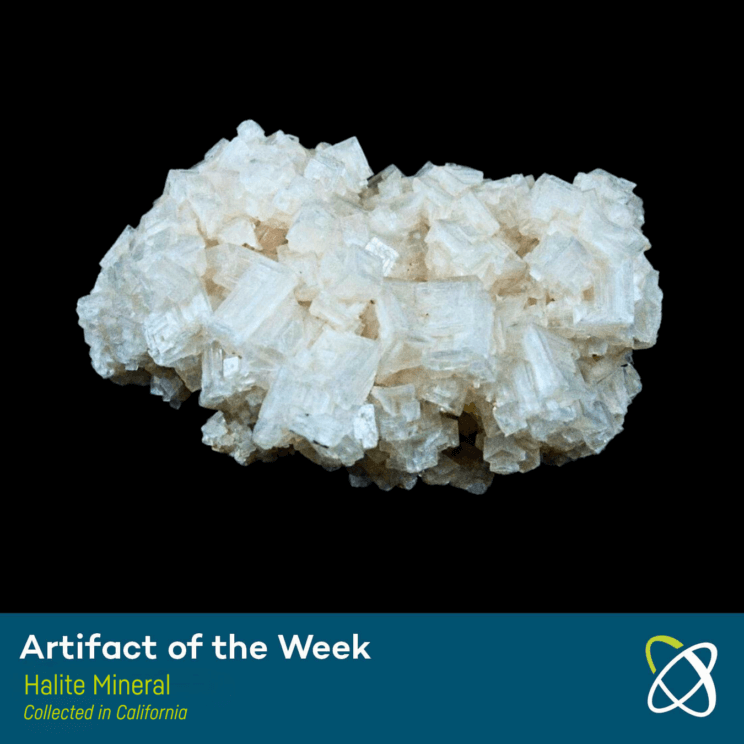Halite Mineral, Collected in California
No, this is not a big chunk of ice. This is a specimen of halite, a mineral that forms cubic crystals of sodium chloride, or salt. That’s right, this is a naturally occurring piece of rock salt! And although halite is turned into salt for the dinner table, you shouldn’t lick or ingest this raw form. Best to wait until it’s processed so any impurities or other substances are removed.

When you think of salt, you picture a white crystal-like substance right? But did you know that salt can come in any color? Pure halite (salt) is colorless or white, but if small amounts of impurities form with the halite, then it can become any color! The typical colors other than white are yellow, gray, black, brown, and red, however, bacterial impurities can create a variety of pastel colors.
It is not uncommon for impurities to make it into halite as it forms. Halite comes from the evaporation of seawater, but the environment needs to be pretty dry with a low influx of seawater. Salt dissolves in water, so too much water means it won’t form. As the salt water evaporates, the salt crystals are left behind. When that salt is covered by layers of sediment and buried over time, it becomes rock salt. Rock salt is mined while salt crystals produced in salt lakes, salt flats, or salt marshes are harvested. Currently halite is forming along the shores of the Great Salt Lake in Utah and salt flats in Death Valley and is collected to be washed, drained, cleaned, and refined for use.
See more Artifacts of the Week








